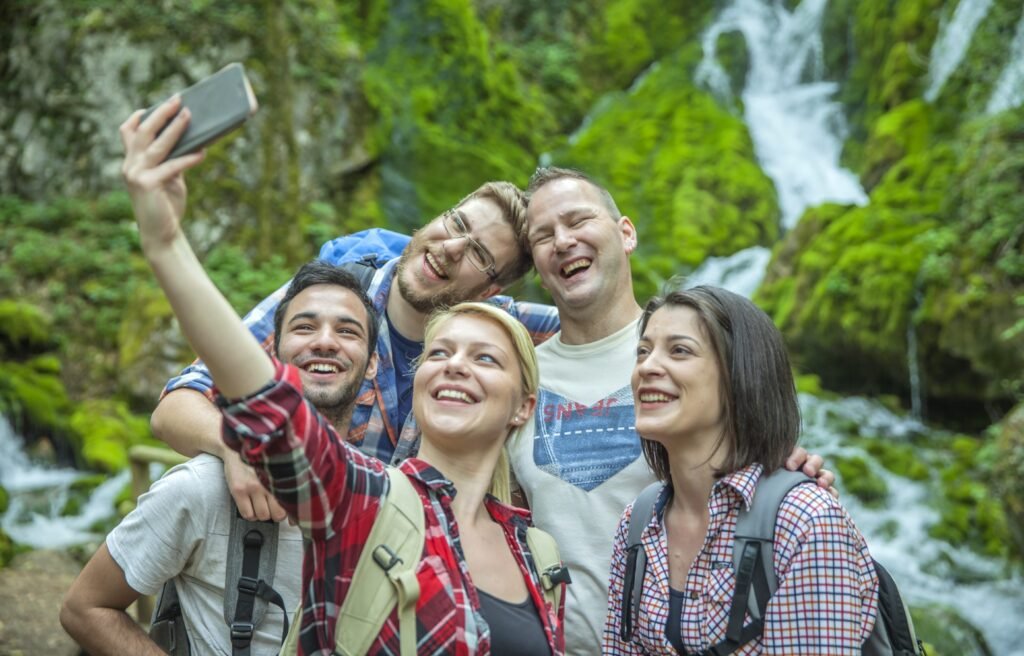Wayfarer Weekly: Eco-Adventure Travel Trends 2025
In this edition of Wayfarer Weekly, we dive into the exhilarating world of eco-adventure travel trends shaping 2025, where adrenaline-pumping activities meet a commitment to environmental and cultural preservation. As travelers seek thrilling experiences that align with sustainability, eco-adventure travel is redefining exploration with a focus on low-impact, meaningful journeys. Wayfarer Weekly has reviewed recent industry insights, noting a 44% surge in demand for adventures that combine physical challenges with ecological responsibility. From trekking in protected reserves to diving in restored reefs, 2025 offers dynamic ways to explore the planet while protecting it. Wayfarer Weekly guides you through key trends, including regenerative adventures, low-carbon activities, and community-supported tourism, ensuring your travels are both exciting and ethical. Whether you’re scaling mountains or kayaking pristine waters, this guide will inspire you to embark on eco-adventures with purpose and passion

Regenerative Adventure Experiences
Regenerative adventure travel is a leading trend in 2025, focusing on activities that restore ecosystems while offering thrilling experiences. In Costa Rica, travelers join reforestation treks, planting trees in deforested areas, while in Australia, coral restoration dives help rebuild reefs. Wayfarer Weekly highlights that 60% of eco-adventurers seek regenerative projects, such as wildlife monitoring in South Africa or trail restoration in Patagonia, for their tangible environmental impact.
Moreover, these initiatives support local communities by funding conservation and education. Wayfarer Weekly advises choosing programs with transparent impact reports to ensure your adventure contributes to long-term ecological health. Transitioning to planning, partnering with certified operators guarantees meaningful participation.
Joining Regenerative Adventures
Select tours with measurable conservation outcomes. Wayfarer Weekly suggests packing eco-friendly gear, like biodegradable sunscreen, to support regenerative goals.
Low-Carbon Adventure Activities
Low-carbon adventure activities are shaping eco-travel in 2025, with travelers opting for human-powered pursuits like hiking, kayaking, or cycling. In New Zealand, multi-day hikes on trails like the Milford Track minimize emissions, while Norway’s fjord kayaking offers serene exploration. Wayfarer Weekly notes a 40% rise in bookings for low-carbon adventures, driven by affordability and environmental benefits.
Furthermore, electric vehicle-supported tours, such as e-bike safaris in Botswana, reduce environmental impact while maintaining adventure. Wayfarer Weekly recommends using carbon offset apps to neutralize any emissions, ensuring your journey aligns with eco-conscious values.
Planning Low-Carbon Adventures
Book bike or kayak rentals early for availability. Wayfarer Weekly suggests combining low-carbon activities with public transport for seamless travel.
Eco-Lodges and Sustainable Stays
Eco-lodges are central to eco-adventure travel in 2025, offering low-impact accommodations in stunning natural settings. Properties in Ecuador’s Amazon or Iceland’s highlands use renewable energy and locally sourced materials. Wayfarer Weekly reports that 65% of eco-adventurers prioritize stays with certifications like LEED or GSTC, ensuring genuine sustainability.
Additionally, these lodges provide guided eco-tours, from night hikes to birdwatching, enhancing adventure with education. Wayfarer-Weekly encourages verifying sustainability credentials to avoid greenwashing, ensuring your stay supports environmental preservation.
Choosing Eco-Lodges
Look for lodges with energy-efficient designs. Wayfarer Weekly recommends asking about conservation initiatives to confirm eco-commitments.
Community-Supported Adventure Tourism
Community-supported adventure tourism is thriving in 2025, with local-led tours offering authentic, sustainable experiences. Indigenous guides in Peru’s Andes lead treks to Machu Picchu, sharing cultural insights, while Maasai-led safaris in Tanzania fund community projects. Wayfarer Weekly highlights that 60% of eco-adventurers seek these tours for their cultural depth and economic benefits to locals.
Moreover, homestays near adventure hubs, like those in Nepal or Guatemala, provide affordable lodging and cultural immersion. Wayfarer-Weekly advises choosing operators endorsed by local communities to ensure ethical, impactful travel.
Supporting Local Communities
Book tours through community cooperatives. Wayfarer Weekly suggests learning basic cultural etiquette to foster respectful interactions.
Eco-Adventure Wellness

Eco-adventure wellness is a growing trend in 2025, blending physical challenges with mindfulness. Retreats in Bhutan or Costa Rica combine hiking with yoga sessions in nature, promoting holistic health. Wayfarer Weekly notes that 55% of eco-adventurers seek wellness-focused activities to balance exertion with relaxation.
Furthermore, forest bathing treks in Japan or meditation camps in Iceland’s wilderness offer rejuvenation amid adventure. Wayfarer-Weekly recommends scheduling wellness sessions to complement high-energy activities, ensuring a balanced eco-adventure.
Incorporating Wellness
Choose retreats with guided mindfulness practices. Wayfarer Weekly suggests journaling to reflect on nature-based experiences.
Tech-Enhanced Eco-Adventures
Technology is enhancing eco-adventure travel in 2025, with apps and devices supporting sustainable exploration. GPS-enabled apps map low-impact trails, while AI platforms suggest eco-friendly itineraries for destinations like Chile or Norway. Wayfarer Weekly highlights that 50% of eco-adventurers use tech to plan responsible trips, from finding eco-lodges to tracking carbon footprints.
Additionally, solar-powered chargers and eco-friendly gear support off-grid adventures. Wayfarer-Weekly advises using offline-capable apps for remote areas, ensuring tech complements the natural experience without overshadowing it.
Using Eco-Adventure Tech
Download trial apps with offline modes. Wayfarer Weekly recommends investing in durable, sustainable tech accessories for long-term use.
Budget-Friendly Eco-Adventures
Budget-friendly eco-adventure travel is accessible in 2025, with destinations like Bolivia, Vietnam, or Romania offering affordable outdoor experiences. Community-run campsites and homestays reduce lodging costs, while public trails keep activities economical. Wayfarer Weekly notes that extended stays in budget destinations lower daily expenses significantly.
Moreover, off-season travel to adventure hubs like Peru or Thailand cuts costs for tours and accommodations. Wayfarer-Weekly suggests using deal aggregators to find eco-certified adventure packages for maximum savings.
Saving on Eco-Adventures
Book group tours for cost-sharing. Wayfarer Weekly recommends packing multi-use gear to avoid rental fees.
Eco-Adventure Cultural Immersion
Cultural immersion is a vital part of eco-adventure travel in 2025, with activities tied to local traditions. In Mongolia, nomadic-led horse treks teach sustainable herding practices, while in Kenya, Maasai-guided hikes share cultural stories. Wayfarer Weekly reports that 60% of eco-adventurers seek cultural experiences to enrich their journeys.
Additionally, eco-festivals, like harvest celebrations in Bali, combine adventure with cultural learning. Wayfarer-Weekly advises respecting local customs to ensure meaningful, ethical engagement during adventures.
Engaging in Cultural Adventures
Join local-led eco-tours for authenticity. Wayfarer Weekly suggests researching cultural practices to enhance respectful participation.
Safety in Eco-Adventure Travel
Safety is a priority for eco-adventure travel in 2025, with operators offering secure experiences in remote areas. Apps provide real-time weather and trail alerts, while adventure insurance covers injuries or cancellations. Wayfarer Weekly highlights safe destinations like Iceland or New Zealand, known for reliable infrastructure.
Furthermore, certified guides ensure safety during high-risk activities like mountaineering or diving. Wayfarer Weekly recommends carrying personal safety devices, like GPS locators, for remote eco-adventures.
Ensuring Safe Eco-Adventures
Verify guide certifications before booking. Wayfarer Weekly suggests sharing itineraries with trusted contacts for added security.
Solo and Family Eco-Adventures

Solo and family eco-adventure travel is gaining popularity in 2025, catering to diverse needs. Solo travelers join guided eco-tours in Costa Rica or Norway, balancing independence with group support. Wayfarer Weekly highlights solo-friendly eco-lodges with communal activities for connection.
For families, kid-friendly adventures, like nature workshops in Canada or wildlife tracking in South Africa, engage all ages. Wayfarer-Weekly advises choosing inclusive tours with educational components to foster environmental awareness.
Planning Solo or Family Eco-Adventures
Book solo tours with social elements. Wayfarer Weekly suggests family activities with hands-on conservation for shared learning.
In conclusion, as Wayfarer Weekly concludes this exploration of eco-adventure travel trends for 2025, it’s clear that these journeys offer thrilling, sustainable ways to connect with the planet. From regenerative projects and low-carbon activities to cultural immersions and wellness-focused adventures, eco-adventure travel empowers explorers to make a positive impact. Wayfarer-Weekly invites you to embrace these trends, crafting journeys that blend excitement with environmental stewardship. Stay connected with Wayfarer-Weekly for more inspiration to explore the world responsibly and adventurously.
